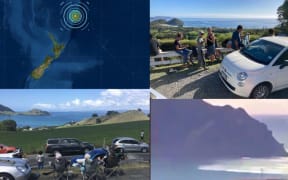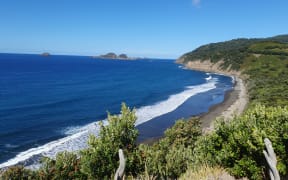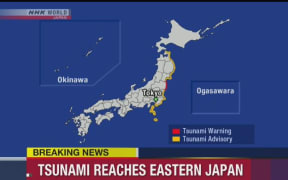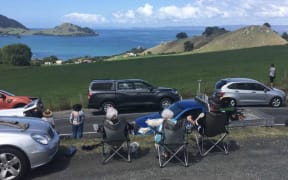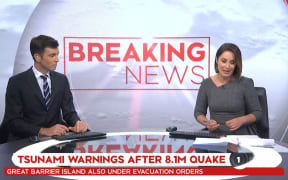Civil Defence leaders have traded blows over who should have been calling the shots on Northland's tsunami evacuation alerts, and the national body has admitted acting too slow.
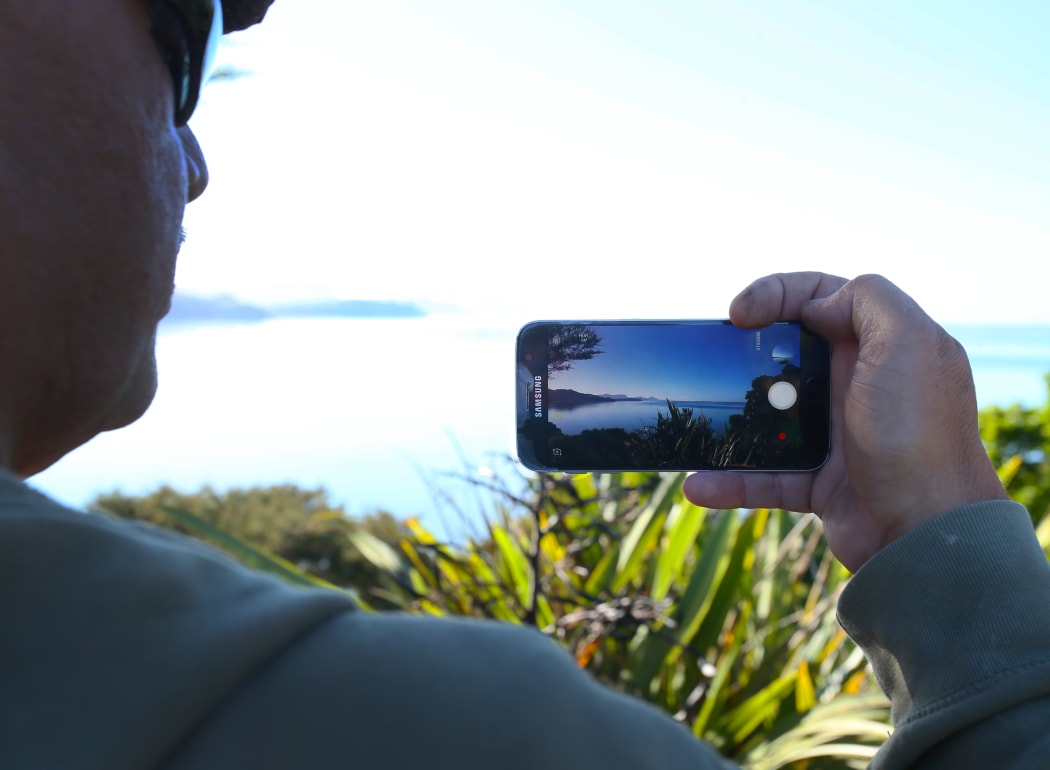
Te Parawhau kaumatua Fred Tito checks out potential Whangārei Harbour tsunami action on Friday 5 March Photo: Supplied / Northern Advocate
Northland Civil Defence leaders activated region-wide tsunami evacuation alerting following a string of large earthquakes on 5 March in a move their national body says didn't follow correct procedure.
The move triggered Tai Tokerau's biggest-ever mass tsunami evacuation, and tens of thousands of people shifted to higher ground, including 15,000 Whangārei central city evacuees.
But Northland Civil Defence says it would do the same again in the same circumstances and its efforts have been backed by local leaders.
One Northland Civil Defence leader Tony Phipps said the group would rather act, so locals could easily understand the blanket coastal evacuation alerts, rather than 'send search and rescue in later to pick up people's bodies out of the sea because they hadn't been alerted'.
The discussion arose at Northland Civil Defence's quarterly governance group meeting in Whangārei on Wednesday, where the National Emergency Management Agency (NEMA) regional emergency management advisor John Titmus, told the Northland governance group they should have waited for NEMA's lead before issuing the warning.
He said after the meeting that the procedure was for NEMA to give a direction to initiate the regional alerting and the group to then proceed.
But Phipps said "the roughly 2.30am, 6.50am and 8.30am events were earthquakes that created a significant threat to life and property."
He said Northland had autonomy in the circumstances, and NEMA's contributions added information to assist in decision- making, rather than a directive that had to be followed.
The first in the series of significant earthquakes on 5 March was a 7.1 off East Cape at 2.27am.
Two further earthquakes, measuring magnitudes of 7.4 and 8.1, then hit near the Kermadec Islands, 1000 kilometres north of New Zealand, at 6.41am and 8.28am.
Tsunami can travel at speeds as fast as 900 kilometres an hour. The 6.40am Kermadec quake was about 45 kilometres deep, and the second just 10 kilometres below the surface, its shallowness dramatically increasing tsunami risk.
Phipps said Northland Civil Defence's actions were the right choice, based on the information available at the time about the size and location of the Kermadecs earthquake activity.
In 2009, an 8.1 magnitude Kermadecs- vicinity earthquake created a 14 metre tsunami that killed 380 people across Samoa and Tonga.
The tsunami from the 8.30am earthquake was forecast to hit North Cape by about 10.15am, and was the strongest earthquake globally since an 8.2 in Fiji in 2018.
Titmus conceded that NEMA had been too slow to provide enough information quickly enough for Northland. It was a challenge for NEMA to do so and he conceded that could have created a problem for Northland.
"The biggest risk we had ever had is a regional tsunami which negates our Achilles heel - time," he said.
Northlanders got their first emergency mobile tsunami evacuation alert via NEMA at about 8.45am on 5 March. National evacuation messaging was only issued for Northland's Cape Reinga to Ahipara on Northland's west coast, and for the Bay of Islands on the eastern coast.
Northland Civil Defence then issued three further emergency mobile tsunami evacuation alerts, but for the evacuation of all of Northland's low-lying coastline.
Its first, at about 9.25am said the region's more than 200 tsunami sirens had been turned on and Northlanders needed to evacuate.
Its second at about 10.10am told evacuees to stay where they were on higher ground, and the third at 11.52am said tsunami surge activity had been seen along Northland's coast and to still stay put.
Tim Robinson, NorthChamber chair said he was completely behind Northland Civil Defence's approach.
The second Kermadec earthquake in particular meant Northland Civil Defence had limited decision making time.
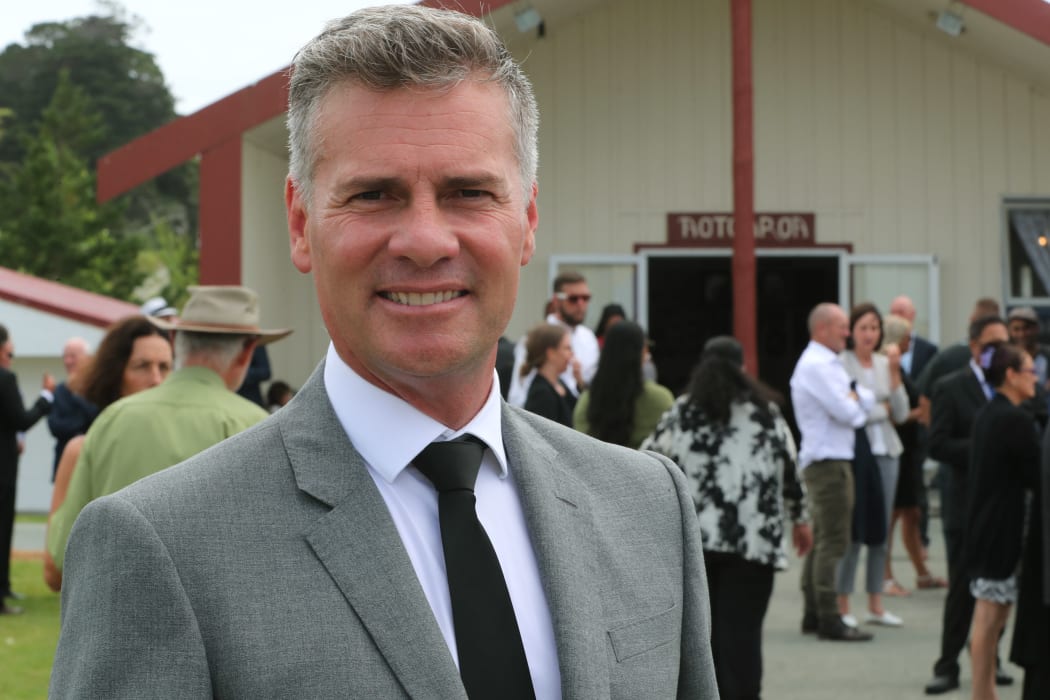
Kaipara Mayor Dr Jason Smith. Photo: Supplied / Northern Advocate
"I'd like to shout out to all the Northland Civil Defence team," Kaipara Mayor Dr Jason Smith said. He believes they 'clearly did the right thing'.
On- the- ground local knowledge provided advantages over distant Wellington-based decisions, he said.
The North's blanket region-wide coastal tsunami evacuation alerting had made it simple and easy for people to follow in what was a regional first for alerting of its scale.
He took issue with the national messaging that only those from Cape Reinga to Ahipara and Bay of Islands to Whangarei needed to evacuate. This left Mangawhai, with its thousands of residents and large area of coastal estuary, out of the picture.
Titmus said the Mangawhai tsunami evacuation alerting was now the subject of an Official Information Act request to NEMA.
Smith also took issue with the same disparity on Northland's west coast after national messaging referred only to the area from Cape Reinga to Ahipara as needing evacuation.
John Carter, the Far North Mayor and former Minister of Civil Defence said he stood by Northland Civil Defence's actions. He backed Northland Civil Defence's actions, and at the same time very much appreciated the national NEMA-level support.

Local Democracy Reporting is a public interest news service supported by RNZ, the News Publishers' Association and NZ On Air.
